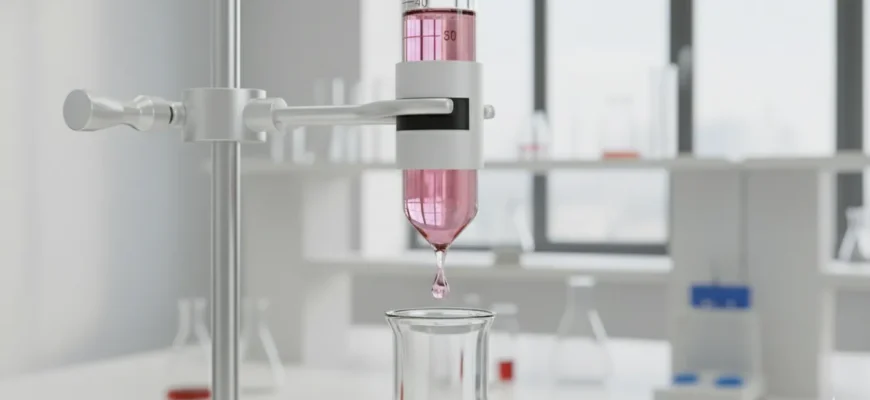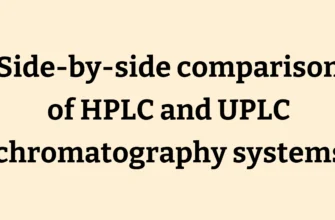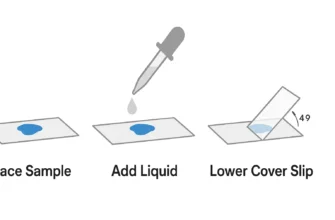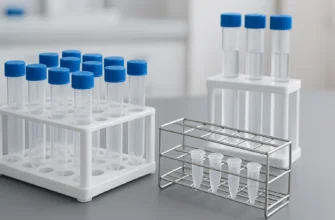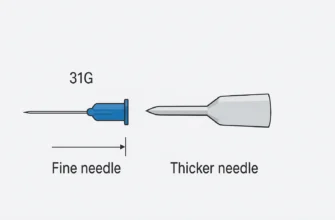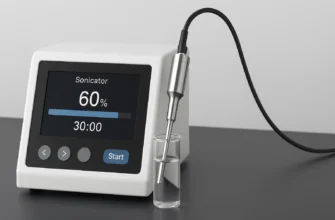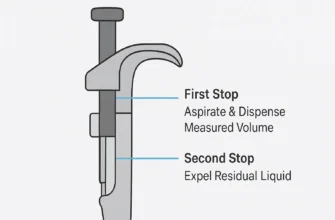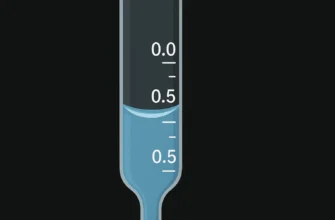Understanding the Burette: A Comprehensive Guide
Key Highlights
A burette (also spelled buret) is a graduated glass or plastic tube essential for dispensing precise, variable liquid volumes in analytical chemistry.
It is a fundamental instrument for achieving accurate measurements in quantitative analysis, particularly during titration procedures for determining solution concentrations.
The stopcock valve enables controlled delivery of the titrant solution, from a steady stream to precise drop-by-drop dispensing for endpoint determination.
Reaching the equivalence point (where moles of titrant equal moles of analyte) is crucial in laboratory titration procedures, while the endpoint (indicator color change) provides visual confirmation.
Proper use and maintenance, including correct meniscus reading techniques and avoiding parallax error, ensure reliable and reproducible results.
Introduction
In the realm of precision analytical chemistry, the burette stands as an indispensable volumetric instrument designed for controlled liquid dispensing. Unlike graduated cylinders that provide approximate measurements or pipettes that deliver fixed volumes, burettes allow continuous, controlled addition of reagents until specific endpoints are reached. This capability makes them uniquely suited for titration processes and other analytical applications requiring incremental liquid addition with exceptional accuracy.
Key Components and Functions of the Burette
A burette’s effectiveness stems from the integration of several precisely engineered components. The main body consists of a long, graduated glass or plastic tube marked with volume measurements, typically subdivided to 0.1 mL with the ability to estimate readings to ±0.05 mL or better. At the bottom, a stopcock valve provides precise control over liquid flow, enabling everything from rapid dispensing to controlled drop-by-drop delivery.
Advanced Burette Technologies
Modern electronic burettes feature sophisticated control systems with digital displays that eliminate meniscus reading errors. These instruments incorporate motor-controlled piston movement, touchscreen interfaces, and programmable dispensing speeds including dropwise dispensing as precise as 0.01 mL increments. Such advanced features significantly reduce human error while improving accuracy and precision compared to traditional glass burettes.
Design and Structure: Exploring Burette Components
Traditional Glass Burettes
Standard volumetric burettes feature a straight tube with precision graduations and a stopcock at the bottom for flow control. The narrow bore of the burette tip ensures liquid is delivered in small, controllable drops, critical for accurate endpoint determination in titrations.
Electronic and Digital Burettes
Electronic burettes represent significant technological advancement through piston-based systems with digital readouts. Key features include:
-
Motor-controlled piston movement eliminating manual wheel operation inconsistencies
-
Three pre-set dispensing speeds: High (2.20 mL/sec), Low (0.75 mL/sec), and Dropwise (0.025 mL/sec)
-
Digital memory capable of saving up to 20 readings for data transfer and analysis
-
One-touch filling completing automatic filling in under 10 seconds
Component Breakdown
| Component | Function |
|---|---|
| Graduated Tube | Holds liquid and displays volume markings with 0.1 mL subdivisions |
| Stopcock/Valve | Controls liquid flow rate from closed to fully open positions |
| Delivery Tip | Narrow bore ensures controlled droplet formation |
| Control Panel (Electronic) | Enables automatic operation and displays digital volume readings |
| Motor System (Electronic) | Provides consistent, programmable dispensing speeds |
Glass vs. Plastic Burettes: Material Considerations
Glass Burettes
Traditional glass burettes, typically manufactured from borosilicate glass 3.3, offer superior chemical resistance and thermal stability. They provide excellent transparency for clear visualization of liquid levels and meniscus formation, essential for accurate readings. However, glass burettes are fragile and susceptible to breakage if mishandled.
Plastic Burettes
Plastic burettes, commonly constructed from materials like polypropylene or acrylic, offer enhanced durability and shatter resistance. They can process a wide range of diluted aqueous solutions but are not recommended for use with organic solvents, ethanol, ammonia, or hydrofluoric acid. While more durable, plastic burettes may have lower chemical resistance for certain applications compared to glass.
Material Selection Guidelines
-
Glass Burettes: Ideal for applications requiring maximum chemical resistance, thermal stability, and optical clarity, particularly in analytical chemistry
-
Plastic Burettes: Suitable for educational settings and routine work where durability is prioritized over ultimate chemical resistance
-
Electronic Burettes: Often combine materials, using borosilicate glass barrels with PTFE components for optimal performance
Using the Burette for Accurate Measurements
Critical Reading Techniques
Accurate burette measurements require proper meniscus reading techniques to avoid parallax error. The observer must position their eye level with the bottom of the meniscus (the curved liquid surface) to ensure accurate readings. Looking from above or below causes parallax error, resulting in systematically high or low readings.
Enhanced Reading Methods
Professional laboratories often employ burette reading cards with thick black lines positioned approximately one marking below the meniscus. This technique sharpens the bottom of the meniscus appearance, making it appear darker and easier to read consistently.
Step-by-Step Guide to Measuring Liquids with Burettes
Preparation Protocol
-
Initial Cleaning: Rinse the burette thoroughly with deionized water, then condition with small volumes of the solution to be dispensed
-
Filling: Fill the burette and ensure the tip is free of air bubbles by opening the stopcock fully momentarily
-
Bubble Removal: Use appropriate techniques including pressure filling or gentle suction to eliminate all air bubbles from the tip
Measurement Procedure
-
Initial Reading: Record the starting volume to the nearest 0.01 mL at eye level with the meniscus bottom
-
Controlled Dispensing: Begin with rapid addition, then slow to drop-by-drop near the endpoint
-
Endpoint Detection: Continue dropwise addition until the permanent indicator color change occurs
-
Final Reading: Record the final volume and calculate the dispensed volume by subtraction
Equivalence Point vs. Endpoint
Understanding the distinction between equivalence point and endpoint is crucial for accurate titrations:
-
Equivalence Point: The theoretical point where moles of titrant exactly equal moles of analyte based on stoichiometry
-
Endpoint: The practical point where the indicator shows a visual change (color change), which should closely align with but may not perfectly match the equivalence point
Common Errors and Safety Precautions
Technical Errors
Air Bubble Issues: Air bubbles in the stopcock or tip can dislodge during titration, causing significant volume errors. Always verify bubble-free operation before beginning measurements.
Parallax Errors: Reading the meniscus from positions other than eye level causes systematic measurement errors. Ensure consistent eye-level positioning for all readings.
Overshoot Errors: Rapid titrant addition near the endpoint can cause overshooting, particularly problematic in sharp endpoint titrations.
Safety Protocols
-
Always wear appropriate personal protective equipment including safety goggles and chemical-resistant gloves
-
Secure burettes properly using appropriate clamps and ring stands
-
Fill burettes below eye level to prevent chemical splashing
-
Follow institutional guidelines for chemical waste disposal
Accuracy and Precision Standards
Class A vs. Class B Burettes
Burettes are manufactured to specific tolerance standards:
| Volume (mL) | Class A Tolerance (±mL) | Class B Tolerance (±mL) |
|---|---|---|
| 10 | ±0.02 | ±0.04 |
| 25 | ±0.03 | ±0.06 |
| 50 | ±0.05 | ±0.10 |
| 100 | ±0.10 | ±0.20 |
Maintenance and Care
Daily Cleaning Protocol
-
Immediate Rinse: Clean with fresh water after each use to prevent chemical deposits
-
Detergent Wash: Use specialized laboratory glassware cleaner for thorough cleaning
-
Brush Cleaning: Employ soft, long-stem burette brushes to clean interior walls without scratching
-
Final Rinse: Multiple rinses with distilled water to remove all detergent residue
-
Drying: Store inverted in appropriate racks with stopcocks open for efficient drying
Stopcock Maintenance
PTFE Stopcocks: These self-lubricating systems require minimal maintenance and offer superior chemical resistance. They eliminate the need for regular lubrication while preventing seizure and contamination issues.
Glass Stopcocks: Traditional glass systems require light lubrication with specialized stopcock grease before storage to prevent seizing. Remove and clean stopcocks thoroughly during maintenance.
Long-Term Storage Guidelines
-
Store burettes vertically in designated racks to prevent rolling and breakage
-
Ensure complete cleanliness and dryness before storage
-
Cover openings with caps or Parafilm to prevent dust contamination
-
For glass stopcocks, apply light grease coating; PTFE stopcocks require no lubrication
Advanced Applications and Modern Developments
Electronic Burette Advantages
Modern electronic burettes offer significant improvements over traditional glass systems:
-
Enhanced Accuracy: Superior precision compared to both glass and digital burettes
-
Reduced Human Error: Automated dispensing eliminates manual speed variations
-
Data Management: Built-in memory systems for result storage and transfer
-
Reproducibility: Consistent motor-controlled operation ensures repeatable results
Quality Assurance and Calibration
Regular calibration ensures measurement accuracy and regulatory compliance. Digital burettes require periodic calibration against certified reference standards to maintain their specified tolerances. Proper calibration prevents costly experimental errors and extends equipment lifespan.
Conclusion
The burette remains an essential instrument for precision volumetric analysis in modern analytical chemistry. Whether selecting traditional glass burettes for their chemical resistance and clarity, or advanced electronic systems for enhanced automation and accuracy, understanding proper usage techniques and maintenance protocols is fundamental for reliable experimental results. The choice between glass, plastic, and electronic burettes should be based on specific analytical requirements, chemical compatibility, precision demands, and budget considerations.
Regular maintenance, proper reading techniques, and adherence to safety protocols ensure that burettes continue to provide the accuracy and precision essential for quantitative analysis. As analytical chemistry continues to evolve, burettes will remain indispensable tools for achieving the reproducible measurements that form the foundation of scientific inquiry.
Frequently Asked Questions
Where can I purchase reliable laboratory burettes in the United States?
Reliable burettes can be purchased from major laboratory equipment suppliers such as Fisher Scientific, VWR International, Cole-Parmer, and Sigma-Aldrich. These suppliers offer comprehensive selections from reputable manufacturers including BRAND, Microlit, and Pyrex, ensuring quality and accuracy for analytical work.
What are the most recommended burette brands for beginners?
For educational and entry-level laboratory use, reliable brands include Pyrex (Corning), Kimble (Kimax), and BRAND. These manufacturers offer durable Class A and Class B glass burettes that provide excellent learning tools for mastering proper titration techniques while maintaining accuracy standards.
How does a burette differ from a pipette in laboratory applications?
Burettes are designed for variable-volume delivery with continuous control, making them ideal for titrations requiring incremental additions. Pipettes deliver fixed, specific volumes with higher precision for that single volume. While burettes offer flexibility for endpoint determination, pipettes provide superior accuracy for transferring predetermined volumes.

